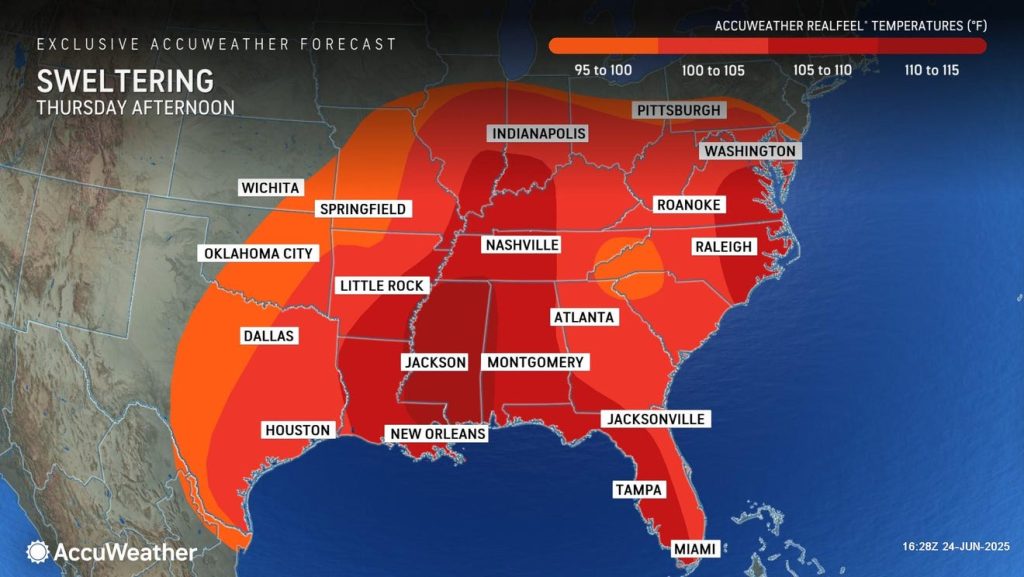National Hurricane Center Monitors Four Tropical Waves, Including Two in the Caribbean
As the 2025 Atlantic hurricane season progresses, the National Hurricane Center (NHC) is closely tracking four tropical waves across the Atlantic basin, with two located in the Caribbean Sea. While no tropical cyclone development is expected over the next seven days, the presence of these waves signals the need for continued vigilance as the season approaches its peak.
According to the NHC, tropical waves are elongated areas of low pressure that move westward across the tropics, often serving as the building blocks for tropical storms and hurricanes. Approximately 85% of all tropical storms in the Atlantic can trace their origins to these waves, making their monitoring a critical component of hurricane forecasting. The four waves currently under observation are spread across the Atlantic and Caribbean, with varying degrees of convective activity and potential for development.
The first tropical wave is positioned in the far eastern Atlantic, with its axis near 28W, south of 14N, moving westward at around 17 mph. The second wave, also in the eastern Atlantic, is located along 43W, south of 15N, and is progressing west at approximately 11 mph. Neither of these waves is currently associated with significant thunderstorm activity, and their development potential remains low due to environmental factors such as wind shear and Saharan dust, which can inhibit storm formation.
In the Caribbean, the third and fourth tropical waves are drawing particular attention due to their proximity to land and potential to produce heavy rainfall. The third wave, located in the central Caribbean near 78W, south of 17N, is moving west at 11 to 17 mph. The fourth wave, in the western Caribbean near 86W, south of 19N, is advancing westward at a slower pace of 6 to 11 mph. The interaction of these two waves with abundant tropical moisture is expected to generate significant rainfall across parts of Central America and the western Caribbean, including areas such as northern Nicaragua, Honduras, Guatemala, and Belize. This could lead to flash flooding and mudslides, particularly in hilly terrain, through at least Friday.
Despite the active monitoring, the NHC emphasizes that no tropical cyclone formation is anticipated from these systems in the immediate future. The Atlantic basin, which includes the northern Atlantic Ocean, Caribbean Sea, and Gulf of America, remains relatively quiet, influenced by factors such as Saharan dust plumes and moderate wind shear. These conditions are expected to limit development through the end of June, though forecasters note that the average first named storm typically forms around June 20. The first named storm of the 2025 season will be Andrea, followed by Barry.
The NHC’s latest advisory also highlights a separate area of interest in the northwestern Caribbean, where disorganized showers and thunderstorms are expected to move west-northwest into the Bay of Campeche by Saturday or Saturday night. There is a low chance—10% within 48 hours and 20% within seven days—that this system could develop into a low-pressure area with potential for further organization if it remains offshore. Regardless of development, heavy rainfall is likely across portions of Belize, Guatemala, and southeastern Mexico in the coming days.
As the Atlantic hurricane season, which runs from June 1 to November 30, continues, meteorologists urge residents in hurricane-prone areas to stay prepared. The season is expected to be above-average, with the National Oceanic and Atmospheric Administration (NOAA) forecasting 13 to 19 named storms, including six to ten hurricanes, of which three to five could become major hurricanes (Category 3 or higher). The peak of the season, typically around September 10, often brings heightened activity, particularly between mid-August and mid-October.
For now, the NHC and regional weather services are maintaining close watch over the tropical waves and other disturbances, providing daily updates to ensure communities are informed. Residents in the Caribbean and Central America are advised to monitor local weather alerts, as heavy rainfall and associated hazards could pose significant risks in the coming days. As always, preparedness remains key, with forecasters recommending that individuals review their hurricane plans and supplies well in advance of any potential storm activity.
Source Weather Channel, weather report, Accuweather

